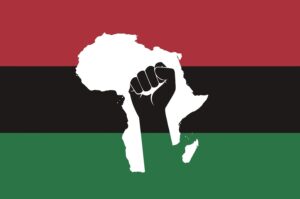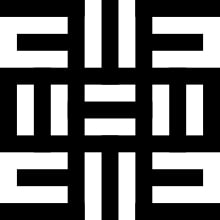Introduction
2 🎨 Intentional use of language, colours and symbolism
The project team behind the development of this Pressbook has been intentional in the use of language, symbols, images, and partnerships to reflect, represent, and empower the Canadian Black communities impacted by this work. In addition to the written, video, image, and interactive content throughout the Pressbook, you will notice:
The Use of Capital “B” for Black
In this Pressbook, we capitalize the letter “B” when referring to Black people, the Black community, Blackness as an identity, and Black experiences to recognize, honour, and uplift the generations of wisdom and advocacy led by Black leaders, communities, and everyday people across the diaspora.
Colours: Red, Black, Green

These are the colours of the Pan-African Flag, which has inspired the design of several national flags across Africa and the Caribbean. Although Pan-Africanism as a form of Black nationalism is not universally embraced by all Black individuals, we recognize and honour its intention and spirit of Black representation, community, and empowerment.
What does each colour represent?
NEA ONNIM NO SUA A, OHU :
Ghana’s Adinkra symbols are ideographic scripts created by the ancient Akan people, a subgroup of the Asante. Each symbol expresses a proverb or philosophy understood within the context of Asante culture. Their meanings are originally conveyed in the Twi language (Danzy, 2009).
You will notice the use of the following Adinkra throughout this Pressbook:
 NEA ONNIM NO SUA A, OHU
NEA ONNIM NO SUA A, OHU
Translating to “He who does not know, can know from learning” (Kojo, 2017), this symbol embodies the spirit of lifelong education. We hope it serves as a reminder to continually expand your understanding of Anti-Black Racism (ABR), while recognizing the strength and wisdom that the Black community brings to Canadian culture and society.
References
Arthur, G. K. (2017). Cloth as Metaphor:(Re) Reading the Adinkra cloth: Symbols of the Akan of Ghana. iUniverse.
Garvey, M. (2021). Declaration of the rights of the Negro peoples of the world. Black Camera, 13(1), 335-342.
Danzy, J. (2009). Adinkra symbols: An ideographic writing system (Doctoral dissertation, The Graduate School, Stony Brook University: Stony Brook, NY.).
North Northamptonshire Council. (2022, September). Black History.
